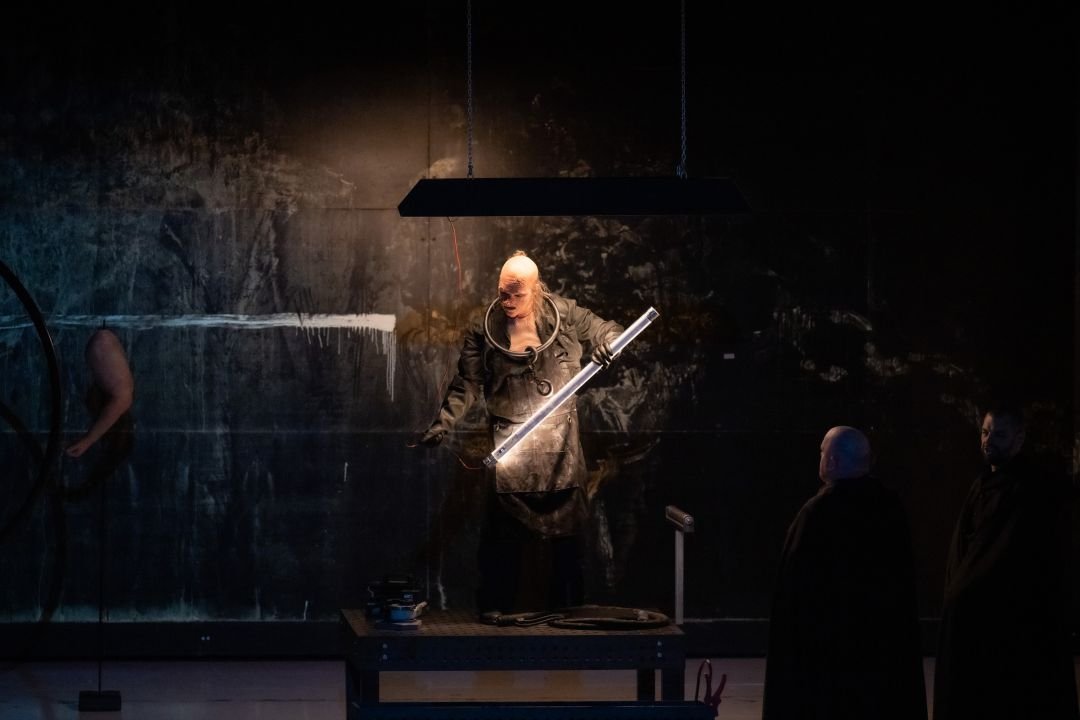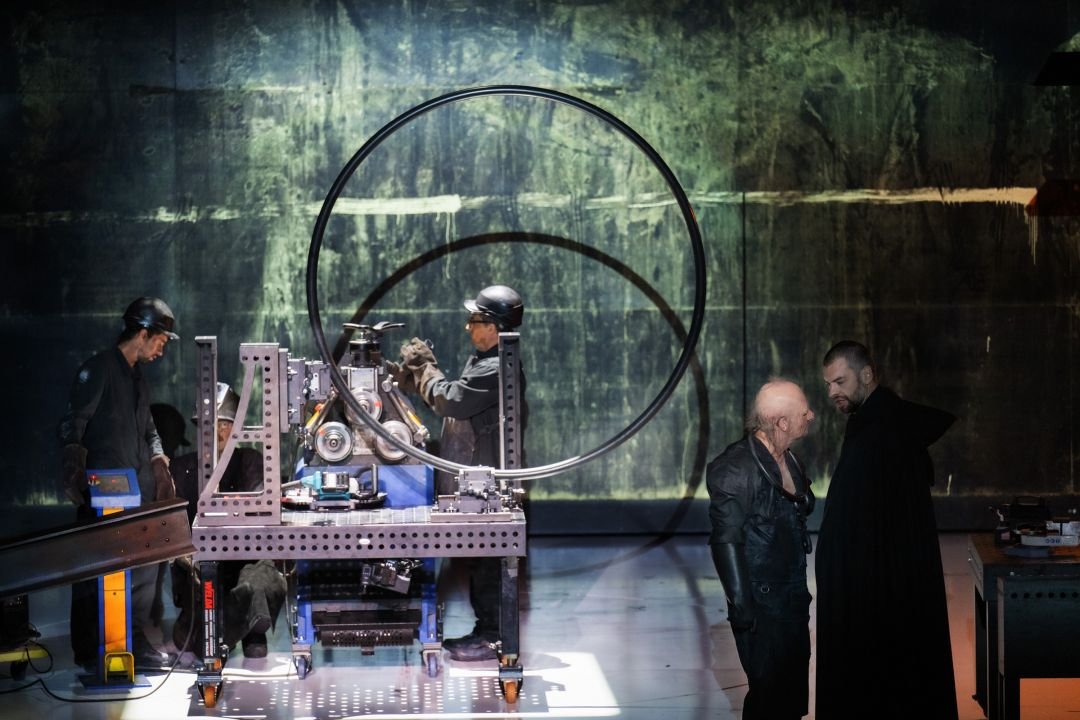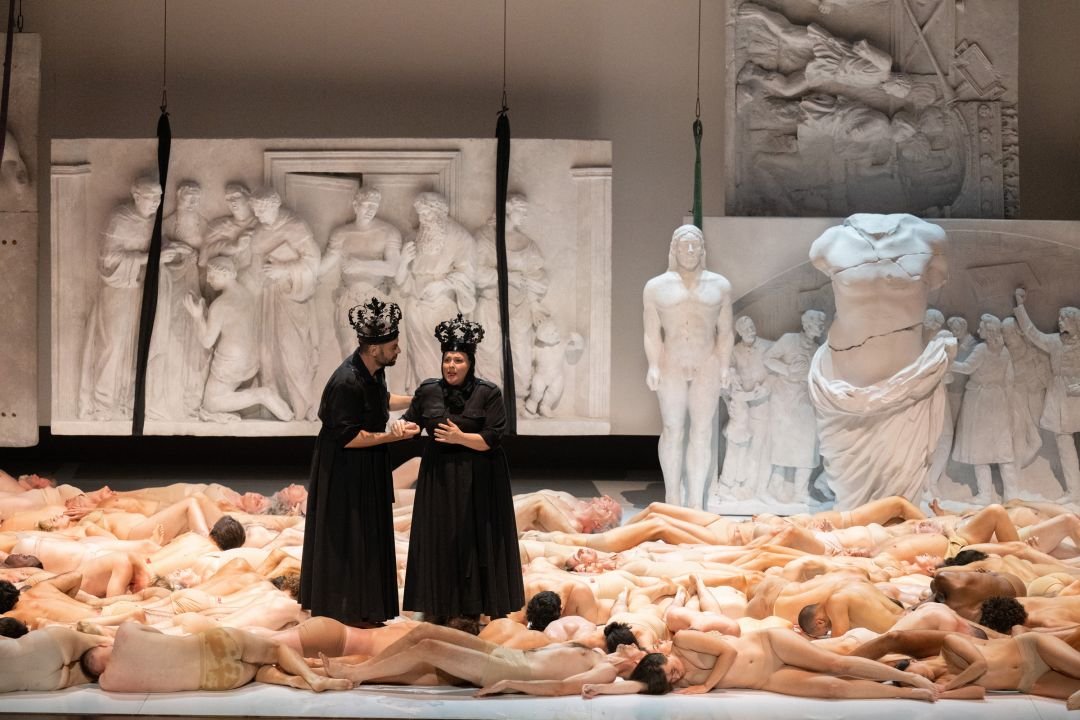At the bottom of the Rhine, magical gold gleams. When the Rhinemaidens who watch over it mockingly reject the advances of the Nibelung Alberich, the dwarf cheats them not only out of their treasure but also out of its secret: whoever forges a ring from the gold and renounces love will rule the world. Alberich does not hesitate, but his omnipotence is short-lived. After all, Wotan, King of the Gods, has also set his sights on the gold. He wants to use it to pay off his debt to the giants who built the fortress he dreamed of for so long. But doesn’t this Valhalla, laboriously constructed from broken pacts, symbolize the fatal aspirations of its owner? Hasn’t his power too already begun to wane?
Casting & credits
Text and music by Richard Wagner (1813 – 1883)
Der Ring des Nibelungen ein Bühnenfestspiel für drei Tage und einen Vorabend
Vorabend: Das Rheingold
Creation at la Monnaie, Bruxelles — 24th October 2023
Director Alain Altinoglu Director, sets, costumes and lighting Romeo Castellucci Dramaturge Christian Longchamp Choreography Cindy Van Acker Artistic collaborator Maxi Menja Lehmann Set designer collaborator Paola Villani Costume design collaborator Clara Rosina Straßer Lighting collaborator Benedikt Zehm Wotan Gábor Bretz Donner Andrew Foster-Williams Froh Julian Hubbard Loge Nicky Spence Fricka Marie-Nicole Lemieux Freia Anett Fritsch Erda Nora Gubisch Alberich Scott Hendricks Mime Peter Hoare Fasolt Ante Jerkunica Fafner Wilhelm Schwinghammer Woglinde Eleonore Marguerre Wellgunde Jelena Kordić Flosshilde Christel Loetzsch Ensemble La Monnaie Symphony Orchestra Production La Monnaie Coproduction Gran Teatro Del Liceu (Barcelona), with Shelter Prod and Prospero MM Productions With the support of Taxshelter.be, ING and Belgian Federal Government's Tax Shelter
About
The premiere of Das Rheingold in 1876 opened a new and decisive chapter in the history of opera. From a single opening chord, sustained over 136 bars, a new world emerged: the cosmos of Richard Wagner’s epic tetralogy Der Ring des Nibelungen. Founded on the ideal of the Gesamtkunstwerk, this work would trigger an aesthetic, philosophical and, above all, artistic revolution that continues to resonate to this day.









